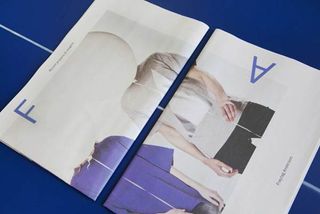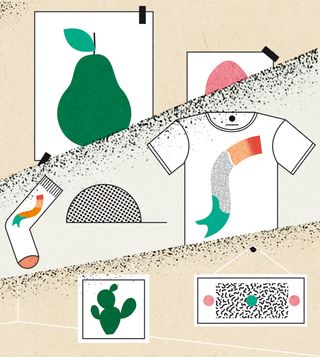How to promote yourself on any budget
Follow our pro self-promo survival guide on how to get your name out there without breaking the bank.
05. Go large or go home

Moving to larger print sizes is a great way of showing off your print work. The problem is, creating the work might be free but printing it certainly isn't.
Services like Instaprint offer lots of different options. Ten A3, 150gsm silk prints will cost around £13. At the other end of the spectrum, ten 400mic, PVC A1 posters prints will set you back nearly £70. Between these extremes there are lots of options. Opting for less dense paper and more modest print processes will save you cash.
When making your choice, it's worth heeding the advice of Freytag Anderson's Greig Anderson (and not just listening to your wallet).
"There's no real value in middle-of-the-road print anymore," Anderson told us. "Print can be very effective, but quality is increasingly important: finishes, materials and formats are all key in creating an impactful, effective piece of communication."
06. Employ money-saving techniques
As such, it worth considering whom you use for printing. Commodity online services are all well and good but there's no substitute for using a handcrafted, boutique service.
We all know printers we'd love to use, but for personal work they might be too expensive. One way to save cash is to ask their advice about how you could make the run cheaper. Could you use fewer colours, or change the shape of your product so there's less wastage?
If you – or your employer – uses a printer regularly you can also look to employ unused space in a run for your personal projects. If you have a good relationship with the printer they may tell you when they have some spare capacity. Also, if your client is struggling to pay for their work to be printed, you and they could share the cost.
However you approach sharing print runs, it's essential that you act with integrity. Big corporate clients might not care if you use unwanted space, but they'll think a lot more of you if you tell them that's what you're planning to do.
07. Wear your brand with pride

T-shirts are a perennial favourite when it comes to marketing. You can expect to pay around £20 for a run of 10 prints. And, if you're very lucky, your clothing line might overtake your design day job.
Without any clients, profile or Twitter followers, two designers – Jay and Nate from Fillstop – invented United Pixelworkers (a fake web design union). In so doing they created an industry phenomenon and sold thousands of T-shirts. Now closed, the spirit of the studio lives on at cottonbureau.com.
If you really want to show off, why not create a 3D print of your logo, or a favourite project? Embracing 3D printing is a great way of communicating your ability to work creatively with cutting-edge technology, and through services like shapeways.com it's inexpensive too.
08. Be unforgettable
Or there's always the nuclear option: do something weird. At theuserisdrunk.com you can commission an in-depth review and analysis of your site from a man who is totally wasted. It costs $80.
There's a serious point to be made here – good design, especially websites – should be so easy to use that even inebriation can't stand in the user's way.
You could also take a cue from Mr Bingo, who famously made a name for himself by embellishing vintage postcards with insults. The project was so successful, he started receiving emails begging him for insult after insult.
Clearly, telling the art director that you're trying to impress that they're hopeless – even if your typography is beautiful – is a high-risk strategy, however.
09. Do good work
There is, of course, one marketing rule that we've failed to mention. It's the oldest trick in the book: do good work. Good work turned in on time will inevitably generate word-of-mouth recommendations and these, as any marketer will tell you, are the best votes of confidence.
The full version of this article first appeared inside Computer Arts issue 240, a self-promotion special. Get up to 55 per cent off a subscription to CA here.
Liked this? Try these...
- 6 tips for nailing your remote working culture
- The ultimate guide to image resolution
- The ultimate guide to logo design

Thank you for reading 5 articles this month* Join now for unlimited access
Enjoy your first month for just £1 / $1 / €1
*Read 5 free articles per month without a subscription

Join now for unlimited access
Try first month for just £1 / $1 / €1
Get the Creative Bloq Newsletter
Daily design news, reviews, how-tos and more, as picked by the editors.
The Creative Bloq team is made up of a group of design fans, and has changed and evolved since Creative Bloq began back in 2012. The current website team consists of eight full-time members of staff: Editor Georgia Coggan, Deputy Editor Rosie Hilder, Ecommerce Editor Beren Neale, Senior News Editor Daniel Piper, Editor, Digital Art and 3D Ian Dean, Tech Reviews Editor Erlingur Einarsson and Ecommerce Writer Beth Nicholls and Staff Writer Natalie Fear, as well as a roster of freelancers from around the world. The 3D World and ImagineFX magazine teams also pitch in, ensuring that content from 3D World and ImagineFX is represented on Creative Bloq.
